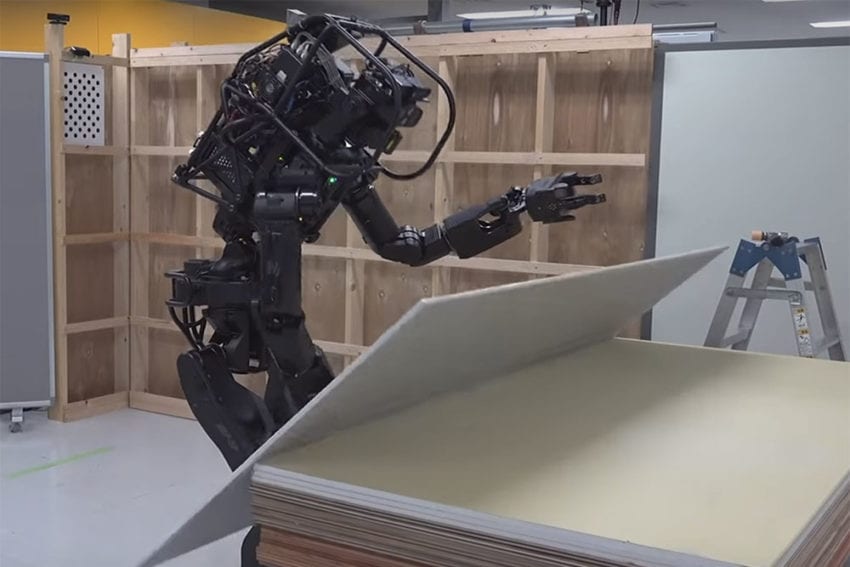If you haven’t seen it yet, there’s a drywall robot video running around that’s showing off in Japan. The shortage of workers across all the trades isn’t news. We’ve been saying for a while that if workers don’t fill the gaps, automation will eventually. Here’s more evidence that it really is coming.
Seriously, a Drywall Robot?
A report from Engadget tipped us off about the latest innovation from Japan’s Advanced Industrial Science and Technology Institute. It’s operating as model HRP-5P and is a humanoid design tasked with filling gaps on a crew that’s short-staffed or is in a hazardous scenario. Imagine being able to just get the work done without worrying about OSHA regulations!
You’ll notice the robot moves pretty slow. It gets the job done using a combination of environmental detection, object detection, and careful movement planning. While it might not be the most efficient member of your crew, it gets the job done and doesn’t complain about its back, the temperature, or how far away the next break is. If the design can reach a near-perfect stage, it’s plausible you can just set this guy to work at the end of the day and come back the next morning to pick up from there.
There are more possibilities than life as a simple drywall robot, though. Nearly every construction task that isn’t at risk due to the robot’s weight can be fair game (it’s less than 6 feet tall and under 225 pounds). Since it’s all one big computer, there’s potential across many trades. Let’s just stick with drywall screwguns for now and leave the military applications to sci-fi movies.
Anyway, we’re huge fans of keeping Americans working rather than replacing them with robots and other automation. While we realize is the gap in workers that is driving the need for automation, we’d much rather see a renewed effort in our culture to promote the trades as the viable high-income careers they can be.
HRP-5P Humanoid Robot Stats
- 5’11.5″ tall
- 222.7 lbs
- 2 neck degrees of freedom (movement axes)
- 3 waist degrees of freedom
- 8 arm degrees of freedom
- 6 leg degrees of freedom
- 2 hand degrees of freedom
- Based on the P3 from Honda



